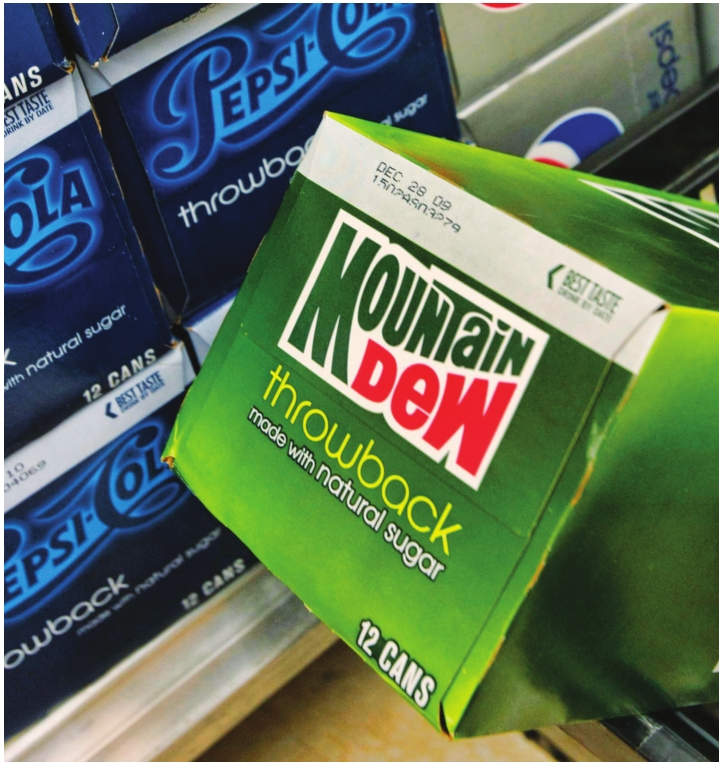
Children and adolescents are most vulnerable to ‘Mountain Dew mouth’
You’ve probably heard about dangers inherent in excessive sugar consumption: empty calories linked to obesity, diabetes and other health problems. That it has displaced beverages such as milk and water.
All true. But though they’re less widely known, there are other problems caused by regular and excessive consumption of non-nutritive beverages and foods, including sugar-free versions. Why? Because they are highly acidic.
Where teeth are concerned, it’s all about acid. Even the sugar is about acid. Sugar harms teeth because bacteria in the mouth gobble sugar, especially highly concentrated sugars. Their waste products after consuming those sugars is acidic. It’s that acid that corrodes teeth. Incidentally, I’ve found it effective to describe it to children as “bacteria poop.”
Dentists like my husband, Peter, see the results in their dental chairs. They’ve even given it a name: “Mountain Dew mouth.” Why Mountain Dew? Because it is exceptionally acidic.
Soda acid levels are astonishingly high. Many have acidity levels only slightly lower than battery acid. Many noncarbonated soft drinks and sweets are just as sugar-laden and acidic: energy drinks, sports beverages, “fruit” drinks containing little or no fruit, mixes such as Kool-Aid and lemonade and candy. Sugar and acid deliver a double whammy, but sugar-free versions are acidic enough to cause problems.
Children and adolescents are the most vulnerable because their tooth enamel is more porous than that of mature adults. And adolescents have the highest rates of soft-drink consumption. But even adults’ harder enamel can be damaged by a constant bath of acidic junk food – or even real food, such as lemon juice.
Acid in food isn’t inherently bad.
In fact, citric acid, the most common ingredient used for preservation and flavor, naturally occurs in citrus fruits.
But acid has become so endemic to so many processed foods and beverages, it’s easy to constantly subject your teeth to it unknowingly.
Bone growth peaks in adolescence.
Consuming nutritious calories during adolescence is essential for maximum strength to bones, teeth and developing bodies. Unfortunately, adolescence is when non-nutritive foods often take the place of real food. The result can be permanent damage to teeth as well as to general health.
“Premature loss of tooth enamel and weakening of overall tooth structure are two devastating oral effects of teens’ poor diet that cannot be reversed later in life,” explains Jane Soxman, DDS, author of a study that ran in the Academy of General Dentistry’s Journal. “The phosphoric, citric, tartaric and/or carbonic acid in soda [and energy and sports drinks, etc.] is now linked to breaking down the tooth enamel around dental sealants and restorations, further compromising teens’ teeth and leading to more extensive dental treatment to prevent total tooth loss.”
Phosphoric acid limits calcium absorption, which has a direct influence on bone density. It’s especially critical for girls. By age 16, teenage girls have accumulated 90 to 97 percent of their bone mass; adequate calcium intake before and during that age is essential. But only 19 percent of girls nationwide between ages 9 and 19 get the recommended daily calcium allowance. New research confirms a direct link between soft drink consumption and bone fractures in teenage girls. “These girls are at an extreme risk for developing osteoporosis, already exhibiting symptoms of this disease in their teen years,” says Dr. Soxman.
Embarrassingly, I’ve experienced acid-related dental problems firsthand, and I’m no teenager. During a cold several years ago, I started tucking a (sugar-free) cough drop between my cheek and gum at night to lubricate my throat. My cold subsided, but that nightly cough drop also kept me from snoring. Using it became a habit.
Until, that is, a year later after a checkup in Peter’s office. “What the HELL have you been doing?” he hissed, lowering his voice so nearby patients couldn’t hear. “Your back teeth are a mess!!” I was dumbfounded. I hadn’t quit brushing or flossing or done anything different. Except, I realized, those cough drops. But they were sugar-free. I avoid artificial sweeteners, but thought the amount in a cough drop insignificant. The label told the tale: the first ingredient in my lemon mint drops was citric acid. Duh!!! I’d long known about acid’s effect on teeth, but hadn’t made the connection. Laying down, only my back teeth were affected. But I’d been giving them an all-night acid bath. Two years later, the repairs are almost finished, including implants and several crowns.
A few tips to avoid a “bad acid trip”:
• Reduce consumption of highly acidic drinks and foods, especially things that can be sipped, sucked or nibbled throughout the day.
• Don’t brush for 30 minutes after eating or drinking acidic food. Seems counter-intuitive, but brushing immediately after consuming acidic foods actually drives acid into tooth surfaces.
• Avoid swishing acidic liquids around in your mouth.
• Use a straw to suck acidic liquids to the back of the palate to minimize dental exposure.
• Read labels. Even “healthy” drinks and snacks such as full-strength juices and fruit leathers can be highly acidic.
Julianne Glatz has been Illinois Times’ food journalist since 2006. Throughout her life, she has been involved in a wide variety or oral pursuits, including singing professionally with the Chicago Symphony Chorus; working as an assistant, lab technician and at the front desk of her husband Peter’s dental office; and catering, teaching cooking lessons, studying food anthropology, and – not least – cooking and eating.